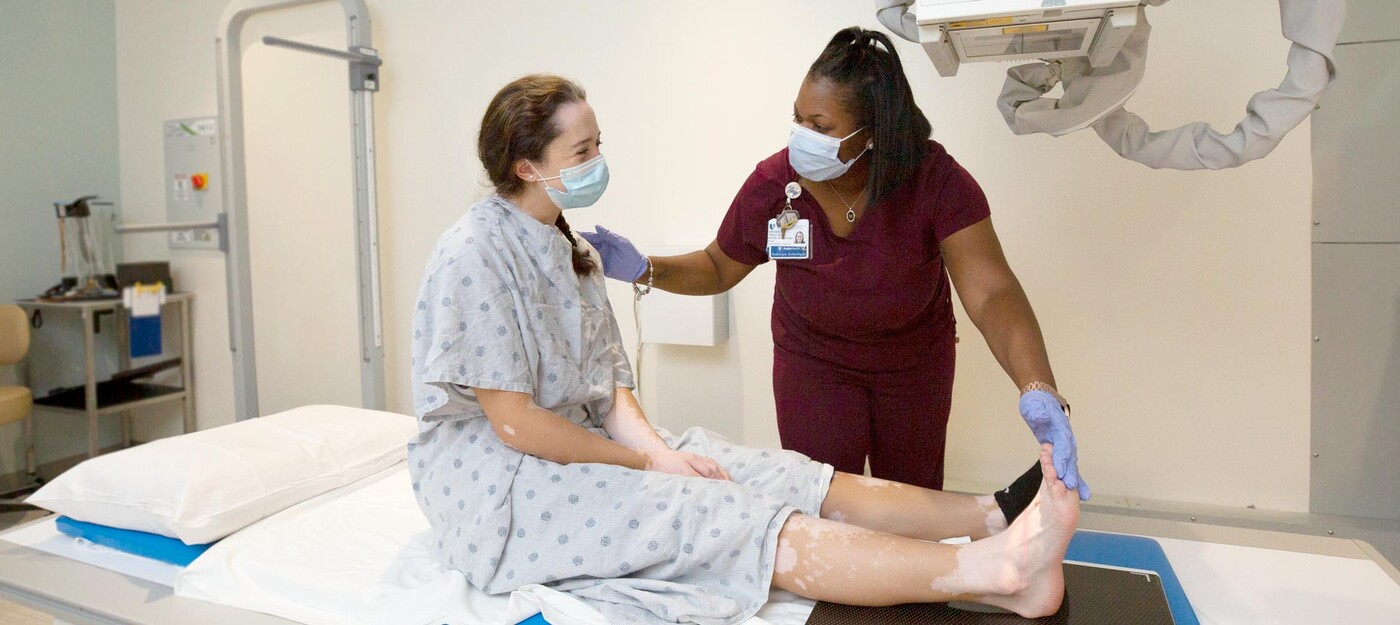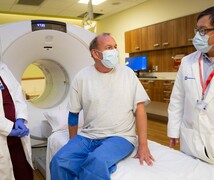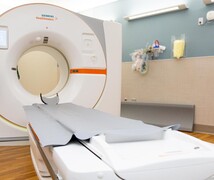Medical experts now know that shielding patients’ reproductive organs during routine imaging exams is not only unnecessary, it can actually increase the risk for radiation exposure, said Robert Reiman, MD, a radiation risk specialist at Duke Health. That’s why lead-based shields will no longer be used during routine imaging exams for most patients at Duke Health clinics, starting in October. The change, which Duke calls “Shed the Lead,” follows recommendations from the National Council on Radiation Protection and Measurements and other organizations including the American College of Radiology (ACR).
A Brief History of Shielding
For more than 70 years, radiologists have been concerned about the effects of radiation from imaging exams on patients’ reproductive organs. Specifically, it was widely believed that the radiation would damage sperm or eggs and that the effects would be passed down to future children. As a result, lead-based shields were placed over patients’ reproductive organs during X-rays, CT scans, and other imaging exams.
Modern Equipment Uses Less Radiation
Advances in imaging equipment now make it safe for you to have these tests without a shield. Duke Health clinics use the latest imaging equipment, which emits about 95% less radiation than older machines, explained Dr. Reiman. Duke facilities are accredited by the ACR, meaning we provide the highest level of safety and image quality. Our scanners also undergo rigorous internal quality control, which exceeds the high ACR standards.
Problems with Shield Placement
Shields can be difficult to place correctly, particularly on small children. In many cases, they end up covering areas of the body that your doctor needs to see. If this happens, a repeat exam, which increases radiation exposure, may be required. Furthermore, said Dr. Reiman, much of the radiation received by reproductive organs during imaging is from secondary radiation that results from a radiation beam intercepting body tissue. Shielding offers no protection from this secondary radiation.
Automatic Controls Can Be Tricked
Most modern X-ray machines, CT scanners, and other imaging equipment automatically determine how much radiation is required based on the part of the body being examined. However, if a shield or other object is placed in the path of a radiation beam, the machine can be “tricked” into drastically increasing the beam intensity, resulting in a much higher dose to unshielded tissue.
Because patients are accustomed to wearing shields, phasing them out will be a gradual process. If you have question about your imaging exam, ask your radiation technologist.




